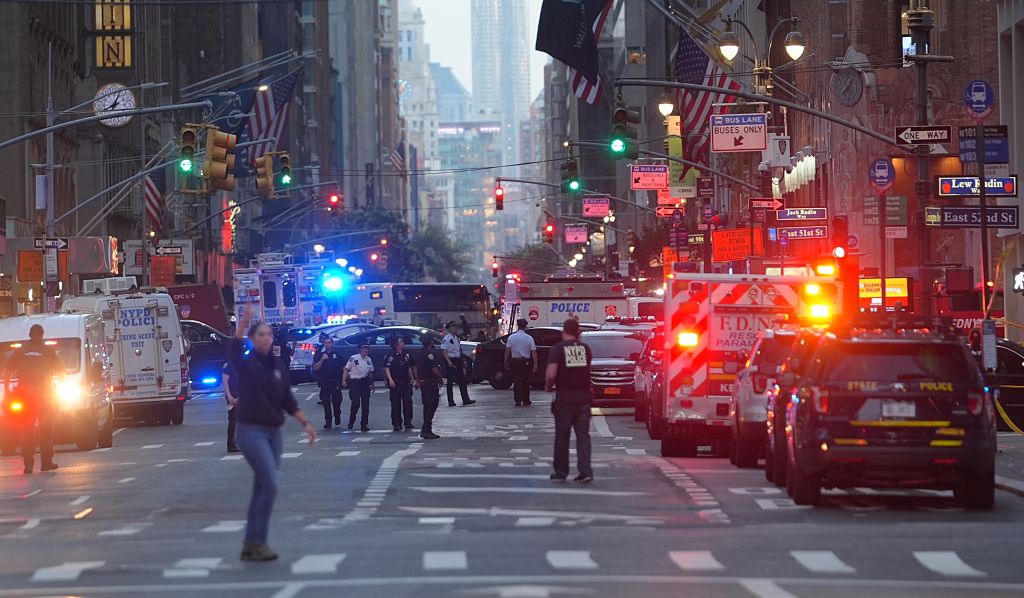How ‘Paris Is Burning’ Preserves Historic Black Queer Spaces You Can Still Visit

Thirty-four years ago, a documentary brought the story of an undiscovered world where queer and trans communities of color had long called home. Paris is Burning dared to capture New York City’s ballroom scene amid social marginalization. This was long before the hit television series RuPaul’s Drag Race and Pose.
The documentary takes viewers on an emotional journey. Many of the people highlighted shared stories of how their families and friends rejected them. With no place to go, many of them organized themselves into “families” and competed in balls.
“You know, a lot of those kids that are in the balls, they don’t have two of nothing. Some of them don’t even eat. They come to balls starving […] or they sleep on the pier or whatever,” said Pepper LaBeija in the film. “They don’t have a home to go to, but they’ll go out and they’ll steal something, get dressed up and come to a ball for that one night and live the fantasy.”
Queer Balls in the 1980s revolved around a house system with a familial structure. Each house was a chosen family that was led by a “house mother” or “house father.” These figures supported younger members, whom they affectionately referred to as their kids. House mothers and fathers offered their children guidance, support, and mentorship.
Introducing The World To Ballroom Culture
Balls were fierce competitions that featured various categories such as “realness,” “high fashion,” and “voguing.”
“Those balls are more or less like our fantasy of being a superstar. You know, like the Oscars or whatever, or being on a runway as a model,” LaBeija said. “At a ball, you have a chance to display your arrogance, your seductiveness, your beauty, your wit, your charm, your knowledge. You can become anything and do anything right here, right now, and it won’t be questioned.”
Despite their competitiveness, Paris Is Burning emphasized how both “houses” and balls were crucial support systems for the LGBTQ+ community. Balls provided safety and freedom. The documentary has received numerous awards over the years, but more importantly, many people applaud it for respectfully introducing the world to Black Queer culture in a way that wasn’t demeaning.
Unfortunately, many of the original venues from the film no longer exist. However, the film’s spirit of walking in your truth still resonates in other physical spaces.
The Stonewall Inn – Greenwich Village
The Stonewall Inn is a gay bar and tavern, located at 53 Christopher Street in Greenwich Village. It was notably the site of the 1969 Stonewall riots, which led to the gay liberation movement and the modern fight for LGBTQ+ rights in the United States.
Today, the venue continues to welcome the community with events, shows, drinks, and more. Through its nonprofit, The Stonewall Inn Gives Back Initiative, they remain dedicated to advocating and supporting LGBTQ+ communities.
The Imperial Lodge Of Elks – Harlem
The lodge was featured in Paris Is Burning. Also known as the Elks Lodge, the Harlem building was a prominent location for drag balls and ballroom events featured in the documentary. According to the NYC LGBT Historic Sites Project, the Lodge is a rare example of a surviving Harlem building that hosted drag balls. It’s on the list of historic buildings.
Christopher Street Pier
Located in Greenwich Village, the Christopher Street Pier was another significant location in the documentary. The pier is where many LGBTQ+ youth would visit for community, support, and acceptance. Despite the changes over the years, it’s still a gathering spot for the LGBTQ+ community.
While the piers have undergone changes since the film’s release, becoming part of a new waterfront park, they continue to be a place of gathering for the LGBTQ+ community.
Venus Xtravaganza’s Home
The home of Venus Xtravaganza, one of the stars in the film, was designated as a historic landmark in 2023. Located in Jersey City, it’s the first tangible landmark designated for a trans person or the trans community in the United States.
Venus did not live to witness the film’s success. She was brutally murdered in December 1988 at the age of 23.
The post How ‘Paris Is Burning’ Preserves Historic Black Queer Spaces You Can Still Visit appeared first on Travel Noire.
What's Your Reaction?
 Like
0
Like
0
 Dislike
0
Dislike
0
 Love
0
Love
0
 Funny
0
Funny
0
 Angry
0
Angry
0
 Sad
0
Sad
0
 Wow
0
Wow
0




























